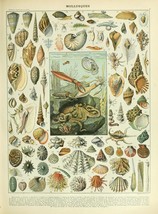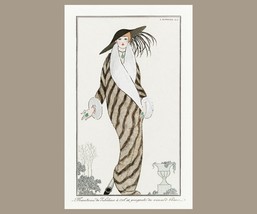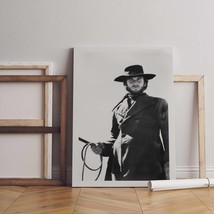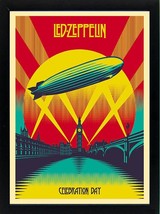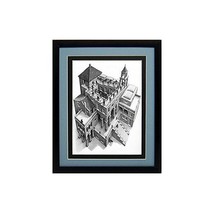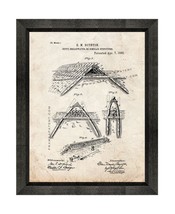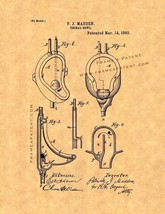The Lady of Shalott Poster 24x36 in John and 50 similar items
The Lady of Shalott Poster 24x36 in John Waterhouse 1888 61x90 CM Tennyson
$39.99
View full item details »
Shipping options
Estimated to arrive by Fri, Apr 25th.
Details
$4.99 via Standard shipping (1 to 5 business days) to United States
Return policy
Refunds available: See booth/item description for details
Details
Purchase protection
Payment options
PayPal accepted
PayPal Credit accepted
Venmo accepted
PayPal, MasterCard, Visa, Discover, and American Express accepted
Maestro accepted
Amazon Pay accepted
Nuvei accepted
View full item details »
Shipping options
Estimated to arrive by Fri, Apr 25th.
Details
$4.99 via Standard shipping (1 to 5 business days) to United States
Return policy
Refunds available: See booth/item description for details
Details
Purchase protection
Payment options
PayPal accepted
PayPal Credit accepted
Venmo accepted
PayPal, MasterCard, Visa, Discover, and American Express accepted
Maestro accepted
Amazon Pay accepted
Nuvei accepted
Item traits
| Category: | |
|---|---|
| Quantity Available: |
Only one in stock, order soon |
| Condition: |
New |
| Height: |
24 inches |
| Width: |
36 inches |
| Artist: |
John William Waterhouse |
| Date of Creation: |
1800-1899 |
| Year: |
1888 |
| Original/ Reproduction: |
Reproduction |
| Original/Reproduction: |
Reproduction |
| Size: |
24x36 |
| Subject: |
Figures & Portraits |
| UPC: |
666576694090 |
| Style: |
Pre-Raphaelite |
| MPN: |
666576694090 |
Listing details
| Seller policies: | |
|---|---|
| Posted for sale: |
More than a week ago |
| Item number: |
144530029 |
Item description
The Lady of Shalott
Art Poster Print
It measures 24 x 36 inches or 61 x 90 cms.
This is a high quality fine art print.
The Lady of Shalott is an 1888 oil-on-canvas painting by the English Pre-Raphaelite painter John William Waterhouse. The work is a representation of a scene from Alfred, Lord Tennyson's 1832 poem of the same name, in which the poet describes the plight of a young woman (loosely based on Elaine of Astolat, who yearned with an unrequited love for the knight Sir Lancelot) isolated under an undisclosed curse in a tower near King Arthur's Camelot.
According to legend, the Lady of Shalott was forbidden to look directly at reality or the outside world; instead she was doomed to view the world through a mirror, and weave what she saw into a tapestry. Her despair was heightened when she saw loving couples entwined in the far distance.
One day the Lady saw Sir Lancelot passing on his way in the reflection of the mirror, and dared to look out at Camelot, bringing about a curse. The lady escaped by boat during an autumn storm, inscribing 'The Lady of Shalott' on the prow. As she sailed towards Camelot and certain death, she sang a lament. Her frozen body was found shortly afterward by the knights and ladies of Camelot, one of whom is Lancelot, who prayed to God to have mercy on her soul. The tapestry she wove during her imprisonment was found draped over the side of the boat.
From Tennyson's poem:
And down the river's dim expanse
Like some bold seer in a trance,
Seeing all his own mischance
With glassy countenance
Did she look to Camelot?
And at the closing of the day
She loosed the chain, and down she lay;
The broad stream bore her far away,
The Lady of Shalott.
Tennyson's verse was popular with many of the Pre-Raphaelite poets and painters and was illustrated by such artists as Dante Gabriel Rossetti, William Maw Egley, and William Holman Hunt. Throughout his career, Waterhouse was preoccupied with the poetry of both Tennyson and John Keats.
Although the painting is typically Pre-Raphaelite in composition and tone, its central framing, as well as the linear echoes between the leaves of the overhanging trees and the hair and creases of the lady's dress and tapestry, betray formal and spatial elements borrowed from the earlier Neo-Classical style.
It is typically Pre-Raphaelite in that it illustrates a vulnerable and doomed woman and is bathed in natural early-evening light. The lady is portrayed staring away from the crucifix, which sits beside three candles. During the late nineteenth century, candles were often used to symbolize life: In this image, two have blown out.
Note: There are many cheap knock-offs of this poster on the market. The inexpensive paper and ink cause the entire image to appear dark. If you can't make out the boat and background clearly, then it is a poor reprint.
This poster delivers a sharp, clean image and brilliant color accuracy. It was printed with an offset lithography press with a coating to protect the inks.

-
Refine your browsing experience
We can show you more items that are exactly like the original item, or we can show you items that are similar in spirit. By default we show you a mix.
This item has been added to your cart
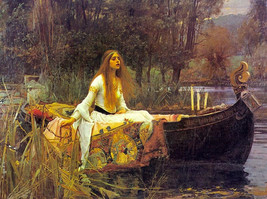 The Lady of Shalott Poster 24x36 in John Waterhouse 1888 61x90 CM Tennyson added to cart.
Only one available in stock
The Lady of Shalott Poster 24x36 in John Waterhouse 1888 61x90 CM Tennyson added to cart.
Only one available in stock
View Cart or continue shopping.
 Please wait while we finish adding this item to your cart.
Please wait while we finish adding this item to your cart.
Get an item reminder
We'll email you a link to your item now and follow up with a single reminder (if you'd like one). That's it! No spam, no hassle.
Already have an account?
Log in and add this item to your wish list.









